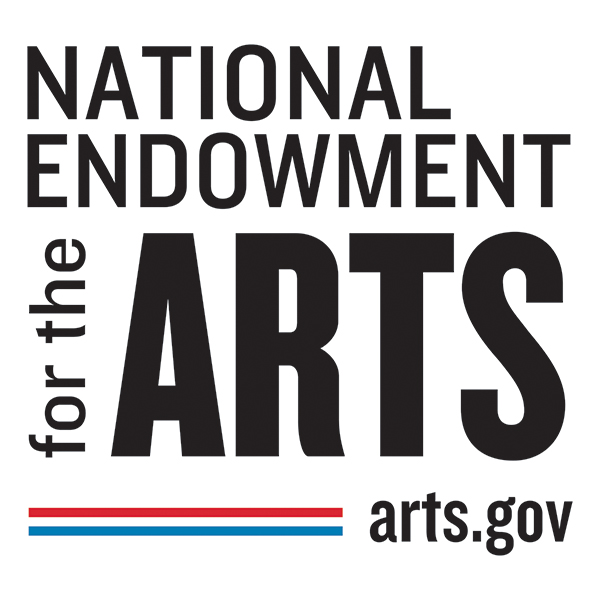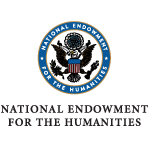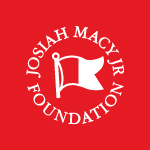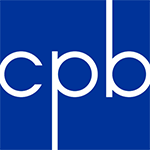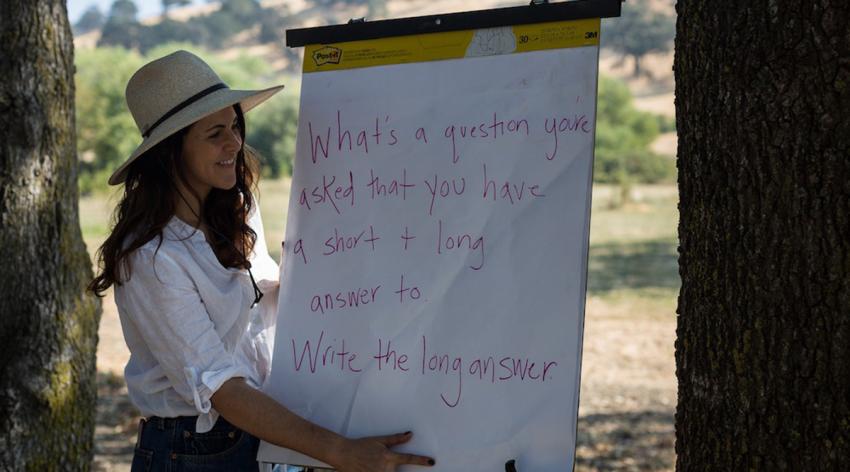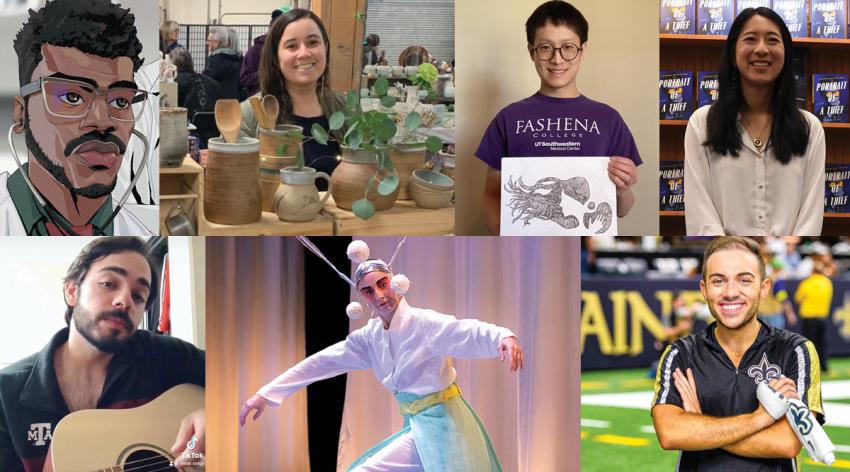The Fundamental Role of Arts and Humanities in Medical Education
Arts and humanities are essential to the human experience and their benefits to medical education go far beyond joys and pleasures.
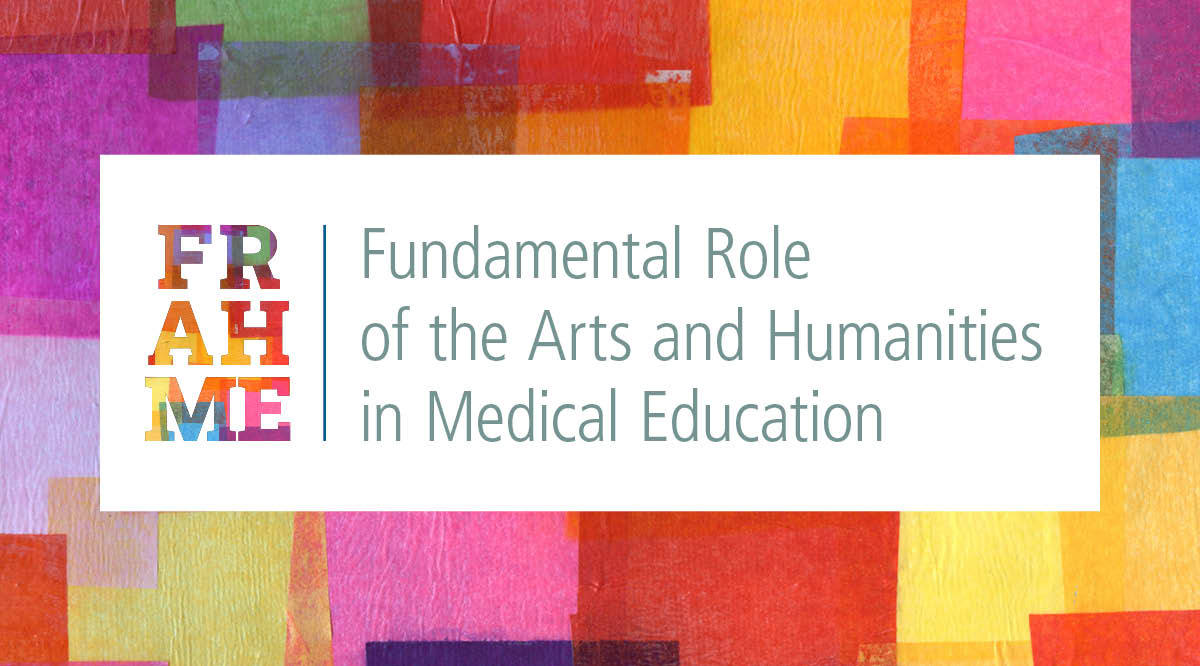
By integrating arts and humanities throughout medical education, trainees and physicians can learn to be better observers and interpreters; and build empathy, communication and teamwork skills, and more.
The AAMC is committed to supporting the integration of arts and humanities.
Through the Fundamental Role of Arts and Humanities in Medical Education (FRAHME) initiative, we provide resources to help medical educators start, develop, and/or improve the use of arts and humanities in their teaching.
Join the FRAHME community
Want to stay informed about FRAHME webinars, calls for proposals, and new research on integrating arts and humanities into health professions education? Subscribe to our bi-monthly FRAHME newsletter.
Interested in asking questions or sharing ideas and insights? Join our virtual community by registering for an account and then selecting "Arts and Humanities in Health Professions Education" from the dropdown.
The Fundamental Role of Arts and Humanities in Medical Education monograph
Our monograph, The Fundamental Role of the Arts and Humanities in Medical Education, provides an in-depth overview of the role arts and humanities play in educating a physician workforce to meet 21st-century health care needs, including enhancing the patient experience, improving population health, reducing costs, and promoting clinician well-being.
Resources on Arts and Humanities in Health Professions Education
Our new Resource Bundle offers important publications on arts and humanities in health professions education as well as the FRAHME Getting Started Guide – a searchable database of activity ideas to help educators start, develop and/or improve the use of arts and humanities in their teaching
FRAHME Webinars
FRAHME has held several webinars since its inception, including topics such as the use of arts and humanities in teaching health equity, the legacy of the Holocaust and its contemporary relevance, and participatory sessions using music, writing and history. All webinars have been recorded and are free to watch; some require registration.
Scoping Review
The AAMC commissioned a scoping review of arts and humanities in medical education that has resulted in three articles:
- How Are The Arts and Humanities Used in Medical Education?: Synthesis Results of a Scoping Review of Published Literature was published in Academic Medicine. This article provides a descriptive and statistical review of 769 publications about the arts and humanities in medical education.
- The Prism Model: Advancing a Theory of Practice for Arts and Humanities in Medical Education was published in Perspectives on Medical Education. This paper offers a theory of practice to support more strategic use of arts and humanities in medical education across all learning domains.
- The Prism Model for Integrating the Arts and Humanities Into Medical Education was published in Academic Medicine. This model guides educators in considering different approaches to teaching through the use of arts and/or humanities, depending on their objectives.
Past Programs
The Art of Diagnosis
Each year, the AAMC, the Society to Improve Diagnosis in Medicine (SIDM), and the Gordon and Betty Moore Foundation invite proposals from medical schools to host an event where undergraduate medical students have the opportunity to present creative works related to their experiences with diagnosis, diagnostic error, or learning the diagnostic process. Several schools are selected each year to receive a $5,000 grant to host their event.
The schools selected for awards in 2023 were Albany Medical College, San Juan Bautista School of Medicine, University of California, Irvine School of Medicine, University of Washington School of Medicine and Vanderbilt University School of Medicine.
In 2022, AAMC hosted a virtual forum with representatives from each of that year's awarded schools: Florida International University Herbert Wertheim College of Medicine, Lewis Katz School of Medicine at Temple University, Morehouse School of Medicine, and University of Toledo College of Medicine. Representatives presented summaries of their events and selected work from medical student artists and writers.
AAMC collects stories and poetry from healthcare professionals
In partnership with StoryCorps, The Good Listening Project, and the National Endowment for the Arts, the AAMC collected hundreds of contributions to our story sharing project. This project took place in 2020 and 2021 and offered a way for physicians, residents, and medical students to reflect on the uncertainty surrounding the twin pandemics of COVID-19 and racial injustice. Some prevailing themes of these contributions were disconnection, hope and gratitude, and grief and loss.
Our article, “Bearing Witness: Storytelling by Healthcare Professionals and Learners During Times of Uncertainty,” describes the project in more detail. You can also access original creative submissions:
- AAMC collection of 55-word stories and poems
- The Good Listening Project’s podcast and books
- StoryCorps AAMC collection: condensed versions and full-length versions
Grants Program
The AAMC has awarded eight $25,000 grants to U.S.-based member medical schools and teaching hospitals working on arts and humanities programs. These grantees will evaluate the impact of existing integrative arts and humanities programs or curricula across the continuum of medical education (undergraduate, graduate, continuing medical education).
Weaving Humanities and Arts into the Fabric of Medicine
In December 2020, the AAMC collaborated with the National Academics of Science, Engineering and Medicine to host a virtual event on the unique and valuable role the arts and humanities can play in medicine, medical education, and clinician wellbeing during the COVID-19 pandemic. The event featured a tapestry of activities and demonstrations that showcase current, integrative arts and humanities approaches to teaching and learning in medicine.
More on Arts and Humanities
This project is supported in part by the National Endowment for the Arts, the Josiah Macy Jr. Foundation, the National Endowment for the Humanities, and the Corporation for Public Broadcasting. Any views, findings, conclusions or recommendations expressed in publications and related programming or products do not necessarily represent those of these organizations.
